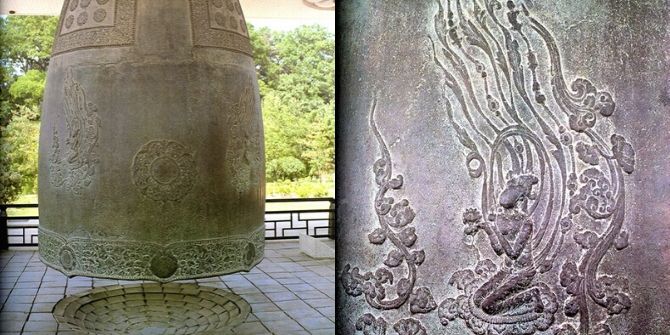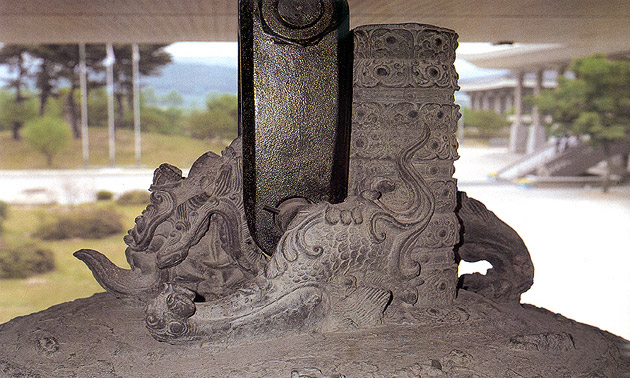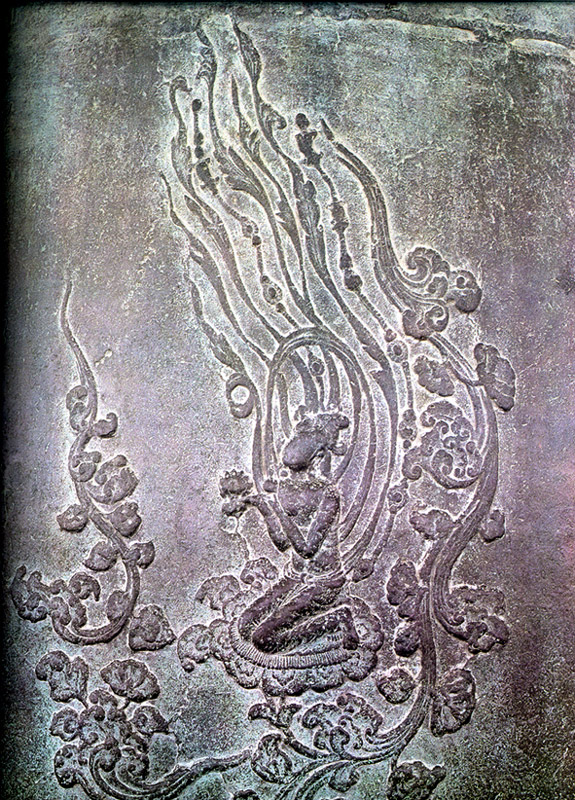BTS Becomes a Subject of Study at Top California Berkeley Campus, Worth 2 Credits!
The subject can be taken in the Democracy Education department at the University of California Berkeley, United States.

Kapanlagi.com - The Giant Holy Bell King Seong Deok is a giant bronze bell made to honor King Seong Deok of Silla (57 BC - 935 AD). It is the most beloved bell in Korea and is known for its beautiful sound. The bell weighs 18.9 tons, is 3.66 meters tall, has a diameter of 2.27 meters, and is 11-25 cm thick. It took 34 years to make this bell. This bell, which is the largest bell in Korea, is hung in a pavilion in the courtyard of the Gyeongju National Museum, North Gyeongsang Province.
It is named the Giant Holy Bell King Seong Deok because it was made on the order of King Gyeong Deok, the 35th king of the Silla kingdom, who reigned from 742 to 765. King Gyeong Deok ordered the making of this bell as a form of devotion to his father, King Seong Deok. However, unfortunately, King Gyeong Deok passed away before the completion of this bell, and it was eventually completed by King Hyegong in 771.

Eumtong Section © heritage.go.kr
This giant bell consists of several parts, starting from the hook shaped like a dragon's head, the acoustic pipe, and the body of the bell itself. At the top, there is a dragon rope with carvings shaped like a dragon's head, which functions as a ring to hang the bell. Then, the distinctive Korean bell pipe is designed to minimize noise called Eumtong. Thanks to this pipe, the bell creates a regular and fluctuating sound, commonly known as the striking phenomenon, which produces a deep and wide resonance. Lastly, the body of the bell is decorated with delicate carvings of a pair of angelic women.
As reported by the Voluntary Agency Network of Korea (VANK), the exact spot to strike the bell is called Dangjwa, marked with a lotus pattern. Unlike bells in Western countries that produce vibrating sounds, this Korean bell is designed to be struck by a wooden beam.

Carvings on the body © heritage.go.kr
Modern physicists have proven that the sound produced by this giant bell is located in an ideal spot to create the most resonant sound while minimizing the impact of the strikes. The combination of many other factors results in a beautiful sound that even modern technology cannot reproduce.
Did you know? The Seong Deok King Bell produces a low sound that can last up to 3 minutes. This duration of sound is the longest in the world. Even at night, the sound of this bell can travel up to 3 km!

© heritage.go.kr
The Sacred Giant Bell, King Seong Deok, is also known as the Emille Bell. The pronunciation of Emille is interpreted as 'mother' in the Silla accent. According to the circulating legend, initially, this bell did not produce any sound when it was first completed. Then, the head monk ordered the bell to be melted down again and sacrificed a child to be put into the boiling metal. Finally, a mother willingly gave up her child for Buddha.
When it was first played, the head monk was finally able to make the bell resonate. However, they were surprised because the sound produced was like the mournful cry of a child for its mother, 'Emille...emille...'
As reported by the Korean Buddhist Cultural Corps, to prove this legend, experts conducted tests to find traces of phosphorus indicating the presence of human remains. However, the results showed no detection of such traces. In the end, some believe that this legend is an analogy for King Hyegong, who ascended the throne at the age of eight after his father, King Gyeong Deok, passed away.
The Seong Deok King Giant Bell is a masterpiece that embodies the art, technology, and knowledge of Silla. A German archaeologist, Dr. Otto Kummel, once said that this bell is the best bell in the world. If Germany had a bell like this, it would be enough to build a museum for it. This bell is also designated as National Treasure No. 36 in Korea.
(kpl/mit)
Cobain For You Page (FYP) Yang kamu suka ada di sini,
lihat isinya
The subject can be taken in the Democracy Education department at the University of California Berkeley, United States.
The concert titled BANG BANG CON can even be connected with ARMY BOMB from home.
The 7-Year Curse often makes K-Pop fans worried because it has claimed many victims. Who are the victims?
Here are 5 reasons to watch the drama THE WORLD OF THE MARRIED that are different from others. What are they?
Do you know who Queen Seon Deok is? In fact, she became the first ruling queen in 5000 years of Korean history. At that time, only men could become kings.
There are differences in the shape, length, and material of chopsticks in each country, especially the three countries that will be discussed this time, namely Korea, Japan, and China. What are they like?
Who has watched the Korean drama Queen Seon Deok? Still remember how the queen wore the crown? If you remember its shape, turns out the crown has interesting facts.
King Muryeong's tomb is the only royal tomb from the Three Kingdoms Period that has been identified. How was King Muryeong's tomb discovered?
One of the legacies of the Joseon Dynasty is the royal tombs. It is very rare to have well-preserved royal tombs of a dynasty throughout the world after passing centuries. What are some interesting facts about the royal tombs of the Joseon Dynasty?
This Original Korean Calendar System was created in 1443, or the 15th year of King Sejong's reign during the Joseon Dynasty. What is the history behind its creation?
Have you ever heard of Arirang, a Korean folk song? Here are some interesting facts about Arirang.
Joseonmal Keunsajeon (Great Korean Language Dictionary) which became the first Korean language dictionary. The dictionary has been lost since it was confiscated by the police during the Japanese Occupation from 1910 to 1945. What is its history like?